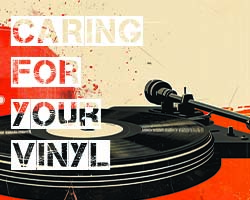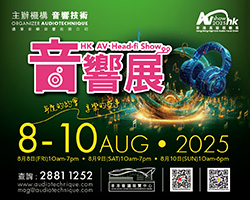The little boy in me has always been curious as to how things work, which inevitably meant I would take things apart and then try to put them back together again, not always successfully I might add. Mechanical and electronic objects still fascinate me, and whenever I go into a DIY store the tools section immediately attracts me, much to my wife’s annoyance, (she likes shoes and handbags!). Anyway what has this got to do with hifi? A lot actually.
Tentative Tinkerings
My first attempt at taking a piece of hifi apart was my parents Pye Black Box stereogram to look at the valve amp when I was in my early teens. Although I didn’t know how it worked then it still had me enthralled and I later on rewired the speakers with better quality wire. I don’t think it really made much of a difference but I enjoyed using a soldering iron. The first serious item I decided to modify was my Thorens TD165 turntable which had the original arm on it. Being an avid enthusiast by the age of sixteen, when I left home at eighteen to go to university in Leicester, as soon as I got there I couldn’t wait to hunt out the hifi shops and back in the seventies a decent hifi shop was common in most cities and towns. I remember walking into the shop on London Road near the station in Leicester and seeing an SME 3009 tonearm. Well my eyes couldn’t stop looking at it. Of course I had read about this now legendary product and immediately wondered how I could buy one to put on my Thorens.
Being a student I had a grant then and worked out if I scrimped and scraped for the rest of the term living on beans on toast I could afford it. The arm cost £35 if memory serves me, which back in 1974 was a lot of money, especially for a student when a week’s wages might only be £10-£15 in the holidays. Determined to have it I took a deep breath and took the plunge as they say. I proudly carried the box back to my student digs and unboxed the SME to stroke it and marvel at the build quality. The next step was a bit harder. How to mount the SME onto my Thorens? I had limited access to tools at university, so firstly I took the base board off and examined the inside of the deck and its workings. Taking the old arm off wasn’t hard, but the issue came when I got the SME arm board supplied by Thorens to mount an SME. This board was designed for use on the TD160 which came without an arm anyway and allowed dealers or owners to mount an SME arm. (Remember the Rega RB300 didn’t come along until the early eighties, and has since then dominated the market as the go to arm for upgrades or tight budgets). The problem was, that although the board screwed onto the sub chassis easily, the hole drilled into the sub chassis for the Thorens arm was a different shape and so didn’t have the correct clearances. This meant laboriously filing the sub chassis until the SME arm pillar fitted.
Several hours later and somewhat fed up with filing the metal sub chassis I had achieved the required shaped hole and voila, I could mount the arm. I fitted the SME and put my Shure M75ED type 2 cartridge in the head shell, aligned it and set the tracking weight and bias. Was the result worth all the effort? Yes. The SME was definitely a better sounding arm and I could now improve my cartridge when funds permitted knowing the outlay would be good value. Later I used a JVC X1 cartridge that had originally been designed for quadraphonic records but was also a great stereo cartridge.
Moving On
I have had many turntables since, but I didn’t go to so much trouble modifying them again, choosing to buy a turntable with the best arm I could afford. In my days of retailing I worked on hundreds of Linn Sondeks, Rega Planer 3s etc. so fitting arms or servicing them became second nature and I turned my attention to speakers and electronics. The first really good speakers I owned were a pair of Allison Three’s that were an American design and I bought them before I got involved in retailing. I’d heard them in the shop I ended up working for and was gob smacked the first time I heard them. The stereo imaging and depth of the sound field was amazing and my wife adored them too. After a few years of owning them I got to thinking what difference changing the internal wiring and binding posts would make. Like most designs back then in the eighties, manufacturers didn’t use the quality of components and wiring we see nowadays. I decided to use Naim cable for the wiring as it was much thicker and oin my mind sounded a lot better than the thin and weedy wire in the Allison’s. The trouble was this required a good soldering iron as the Naim cable was quite thick, so a lot of heat was needed to melt the solder and make a good joint. This was easier said than done, so a moment of Deja Vu came over me again remembering the Thorens and the time it took to modify it. After some cursing and burnt finger tips I managed to do both speakers. They were a true three way design, so I had six drive units to solder to. I can’t say the results were night and day but I felt justified in the upgrade.
More Tinkering
Most recently I took on a far more ambitious project, upgrading the components in a Quad 33 pre amp and 303 power amplifier. Purists would say why bother when the design was so good back in the late sixties. Well the trouble back then was that components weren’t as good electrically, or deteriorated badly over time. After doing a lot of research on the internet where there are numerous sites dedicated to the topic and where you can purchase the relevant parts from, I proceeded to buy the Quad second hand on ebay. The first Quad 33 pre amp I got was in a sorry state when it arrived and although it worked, it had been tinkered with and showed its age, being filthy inside… and the case was in poor condition too. The various forums and general advice were don’t bother rewiring, just replace any aged capacitors, transistors and resistors. The power supply was the key area to upgrade and this was straight forward. The Quad has multiple daughter boards mounted onto the main mother board, so servicing is made a lot easier… in theory. The trouble I had was that because the pre amp was in such a poor and dirty state I had to strip the pre amp down completely, which meant de-soldering many awkward components and wiring looms. After many hours of frustration and eventually only getting a bad hum from the pre amp, I decided to not bother wasting any more time on it. I sold it for spares…at a loss of course.
Undeterred I saw another Quad 33 a few weeks later that looked in far better condition and was being sold cheap as the owner wasn’t sure what was up with it. I bought it and when it arrived it was immaculate looking as if it had just come out of the factory. I went ahead replacing the relevant parts as recommended and when tested, it worked fine. I also got a Quad 303 power amp and upgraded the output capacitors and selected components on the amp boards and power supply. It worked fine after testing and checking with a meter, but I had seen some companies who had also upgraded the front panel where the connections are. I tried to get hold of a newly fabricated front panel but had no joy. I then proceeded to make one as the modifications were too radical to use the existing original panel and involved a new power socket, speaker and input terminals and a power switch. This worked fine but the perfectionist in me wasn’t happy with the end results and sold it. The 33 pre amp was sold at a decent profit and the new owner was over the moon with its condition and performance, so a result there.
Know Your Limits!
In conclusion then, what have I learned? Well modifying equipment can be enjoyable and result in worthwhile gains. On the other hand if things go wrong you can lose money and in a worse case scenario have a useless piece of electronics. Experience tells me that you need to know when to quit wasting time and money. Even very experienced electronics engineers don’t always succeed in repairing or resurrecting an older piece of equipment for various reasons. Like classic old motor cars, if you have the skill and means to bring it back to life and restore it to original condition regardless of cost, then fair enough. Modifying can reap great rewards, but know your limitations and be sensible.
Finally please do not make any modifications or repairs unless you know precisely what you are doing or get expert advice. Remember electricity can kill.
Ian Ringstead










































































































































































































You must be logged in to leave a reply.